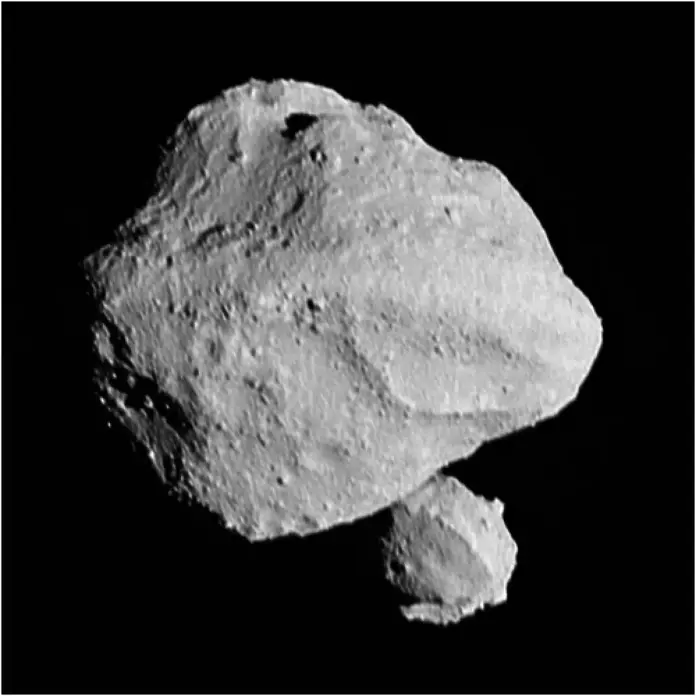
Astoundingly, the Asteroid Dinkinesh Isn’t Alone
The spacecraft Lucy passed by the binary pair two days ago and splendidly took a series of photos.
Launched over two years ago, the space probe Lucy is scheduled to visit various asteroids, including so-called Trojans, over the next decade. These Trojans are remnants of the material that the outer planets in our solar system were formed from. They are projected to give us insight into the conditions under which our solar system took shape over four billion years ago.
Lucy’s First Encounter: 152830 Dinkinesh
Earlier this week, Lucy swooped past her first target: 152830 Dinkinesh. This asteroid, with an estimated diameter of 790 meters and due to its size discovered as late as 1999, follows an elliptical orbit, varying its distance from the sun between 290 million and 365 million kilometers. Dinkinesh, which had never been closely examined before, turned out to hold a surprise.
A Miniscule 220 Meter Satellite
As it turns out, Dinkinesh is accompanied by a natural satellite with a diameter of 220 meters. Scientists at NASA, the United States space agency, had been suspecting this, noticing that Dinkinesh’s brightness kept fluctuating. In the images below, you can see Dinkinesh with its small companion in the foreground. The two asteroids appear to be moving rapidly in relation to each other, but that’s not the case. The apparent motion is caused by the Lucy spacecraft zipping past the duo at a speed of 4.5 kilometers per second — much like how trees on the side of the freeway whiz by while a distant house moves comparatively slower.
A Tough Test
The flight past Dinkinesh was more than an encounter for scientists; it was a test to check the tracking system. This tracking system ensures that Lucy automatically follows an asteroid during a close flyby. “And the system is working well”, concludes engineer Tom Kennedy from Lockheed Martin. The discovery of a satellite orbiting Dinkinesh posed an additional challenge to the scientists, but fortunately, it didn’t cause any issues. “Simulating, testing, and practicing is one thing. But seeing something work in real life is quite another.”
Lucy’s Journey Continues
Now, Lucy is moving forward. It will first head towards Earth, leveraging gravity assist before course-correcting towards 52246 Donaldjohanson. The spacecraft aims to reach the four-kilometer-wide asteroid by 20th April 2025. Afterwards, it will proceed towards Eurybates (2027), Polymele (2027), Leucus (2028), Orus (2028), and Patroclus-Menoetius (2033).
The Ultimate Mission
The end goal of Lucy’s mission is to gain more knowledge about the history of our solar system. There remain some blind spots that Lucy aims to birth. Who knows, we might gain more insights into the origins of organic material and, consequently, life on Earth.











